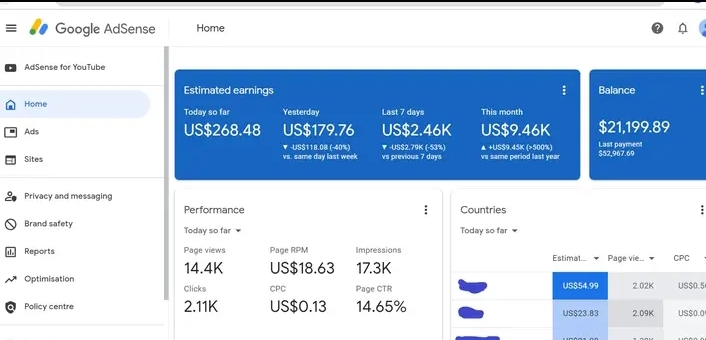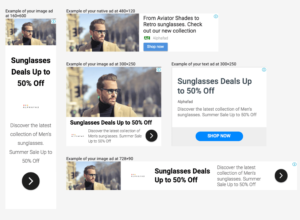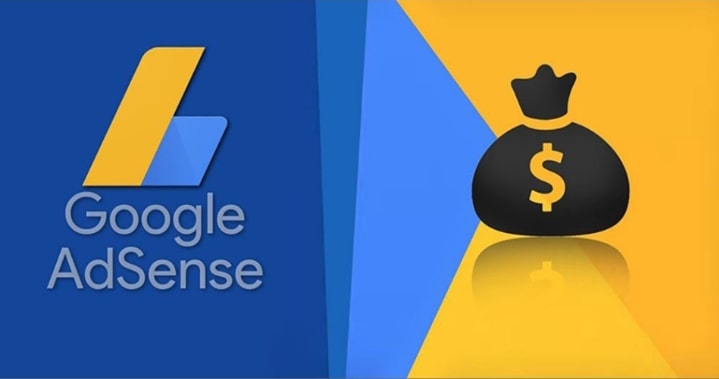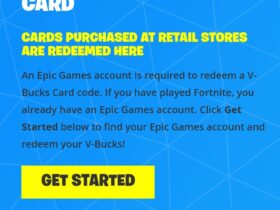Are you a website owner or content creator looking for a way that you can make money from your website? Look no further than Google AdSense. It is a powerful platform that allows you to display targeted ads on your website and earn revenue. Whether you run a blog, have an online store, or create engaging YouTube videos, Google AdSense offers a simple and effective way to monetize your web traffic. In this article, we’ll explain the basics of Google AdSense, discuss its benefits, and show you how to get started on your journey to maximizing your website’s earnings.
In this introduction, the focus is on capturing the attention of website owners and content creators who are interested in monetizing their online presence. It highlights the relevance and benefit of Google AdSense as a means to generate revenue from websites and digital content.
Table of contents
What is Google AdSense?
How can I sign up for Google AdSense?
What are the requirements to join Google AdSense?
How do I earn money with Google AdSense?
What types of ads can be displayed through Google AdSense?
Can i have two AdSense account
Are there any policies or guidelines I need to follow with Google AdSense?
What is Google AdSense?
Google AdSense is an online advertising platform that is developed by Google. It allows website owners, publishers, and content creators to monetize their digital content by displaying relevant ads on their website, blog, or YouTube channel. AdSense enables publishers to earn revenue when visitors interact with or view these advertisements.
In the AdSense dashboard, the website owner can create what is known as an “ad unit.” These ad units are snippets of code that need to be inserted into specific areas of the website code. These areas are typically designated for displaying ads, such as the sidebar, header, or within the content itself.
When a visitor accesses the website, the Google system analyzes the content of the webpage and the visitor’s interests based on their browsing history. Then an ad auction takes place, where advertisers bid for the ad space that matches the visitor’s interests and the website content.
The ads that have the highest bids and are relevant to the visitor’s interest are selected to be shown on the website. The format, size, and placement of the ads are determined by the ad units that were created in the AdSense dashboard.
How can I sign up for Google AdSense?
Signing up for Google AdSense is a straightforward process that can allow you to monetize your website or YouTube channel. To start, visit the Google AdSense website and click on the Sign Up Now” or Get Started” button. You will be prompted to sign in with your existing Google account or create a new one if you don’t have one.
Once you have signed in, you’ll be directed to the AdSense application form. Provide the URL of your website or YouTube channel, depending on where you want to display ads. It is important to ensure that your website or channel complies with AdSense policies and guidelines, including having sufficient original content and adhering to prohibited content guidelines.
Next, you need to enter your personal and contact information, such as your name, address, email, and phone number. Make sure to provide accurate detail, as this information is used for payment purposes and account verification.
During the application process, you’ll have the opportunity to customize your ad setting. You can choose the ad format that you prefer, such as text ad, display ad, or native ad, and specify the ad sizes and types that best suit your website design and layout. Additionally, you can set preferences for certain types of ads or categories you want to allow or block on your website.
Before submitting your application, carefully read and accept the AdSense policies, terms and conditions, and program policies. It is crucial to understand and comply with these policies to ensure a positive and compliant AdSense experience.
Once you have submitted your application, Google will review your website or YouTube channel along with your application details. The review process typically takes a few days to a few weeks. Google assesses factors such as the quality and originality of your content, website design, user experience, and adherence to their policies.
If your application is approved, you will receive an email notification from Google. This email will contain instructions on how you can access your AdSense account and generate the ad code snippet. These code snippets need to be implemented in your website’s HTML or connected to your YouTube channel to enable the display of the ad.
To learn more on how to create Google AdSense account: CLICK HERE
What are the requirements to join Google AdSense?
To join Google AdSense, you will need to meet certain requirements. First and foremost, you must have a website or YouTube channel. For a website owner, your website should have a substantial amount of original and quality content. It is important to focus on creating valuable content that provides information, entertainment, or solves a problem for your audience. Your website should also have clear navigation and adhere to Google guidelines on prohibited content, which include avoiding adult content, violence, hate speech, illegal activities, and copyrighted material. For YouTube creators, you will need to have an active YouTube channel that complies with the YouTube Partner Program policies, including community guidelines and copyright rules.
Ownership of the content is another important requirement. You must have the necessary rights and ownership of the content on your website or YouTube channel. This means that you should be the creator of the content or have obtained the proper authorization to use and monetize it. Google wants to ensure that you have the legal rights to display ads alongside your content.
While there is no specific traffic requirement mentioned by Google, it is generally recommended to have a decent amount of traffic on your website before applying for AdSense. Having a steady stream of visitors indicates that your website is established and can provide value to advertisers. However, keep in mind that the amount of traffic alone does not guarantee approval. Google also evaluates the quality and relevance of your content.
To participate in the AdSense program, you will need to be at least 18 years old. This requirement ensures that you are legally able to enter into an agreement and receive payment from Google. Additionally, Google AdSense is available in many countries around the world. You need to be in a country where AdSense is supported. You can check the list of supported countries on the AdSense website to see if your country is eligible.
How do I earn money with Google AdSense?
Like I said before, Google AdSense provides opportunities for website owners and YouTube creators to earn money by displaying ads on their platforms. The process begins by integrating the AdSense ad code into your website’s HTML or connecting it to your YouTube channel. This code creates designated spaces where ads can be displayed.
The primary revenue model for AdSense is pay-per-click (PPC), which means that you will earn money when visitors click on the displayed ad. The revenue generated from each click can vary based on factors such as the ad value, competition, and advertiser bidding. The more clicks your ad receives, the more revenue you can generate.
In addition to PPC, AdSense also offers a cost-per-impression (CPM) revenue model. With CPM, you can earn money based on the number of ad impressions that are displayed to visitors, regardless of whether they click on the ad. Advertisers pay a certain amount for every thousand impressions, and you will receive a portion of that revenue.

Google handles the payment process and keeps track of the earnings generated from ad clicks or impressions. They retain a portion of the revenue, and the remaining amount is paid out to you as the publisher. It is important to note that the revenue share percentage can vary depending on factors such as the ad type and the advertiser’s relationship with Google.
To receive payment on Google AdSense, you need to accumulate earnings in your AdSense account until you reach the payment threshold. The threshold is typically set at $100, but it may vary depending on your location and currency. Once your earnings exceed the threshold, Google initiates the payment process, which can be done through various payment methods such as direct bank transfers or checks.
What types of ads can be displayed through Google AdSense?
Google AdSense offers various types of ads that can be displayed on your website. Certainly! Here is a more detailed explanation of each ad format offered by Google AdSense. These ad formats include
- Text Ads
- Display Ads
- Responsive Ads
- In-feed Ads
- In-article Ads
- Matched Content Ads
- Video Ads
Text Ads
Text ads are a simple yet effective ad format that consists of plain text. They typically include a headline, a brief description, and a clickable link. These ads are designed to blend in with the content of your website and appear as natural recommendations or suggestions. Text ads are often placed within or below articles, in sidebars, or in other designated ad spaces. The purpose of a text ad is to provide relevant information to users in a straightforward manner without any visual distractions. They seamlessly integrate with the surrounding content, ensuring a smooth user experience.

Display Ads
Display ads are visually appealing and can include images, graphics, animations, or rich media elements. They come in various sizes and formats, such as banners, rectangles, or squares. Display ads offer advertisers more creative freedom to capture users attention and convey their brand message effectively. These ads can be placed throughout your website page, including the header, sidebar, or within the content. Display ads aim to attract users visually and stand out from the rest of the content. They often use eye-catching visuals and compelling designs to engage users and encourage them to click on the ad.

Responsive Ads
Responsive ads are designed to adapt dynamically to different devices and screen sizes. They automatically adjust their size, appearance, and format to fit the available ad space on mobile phones, tablets, and desktops. Responsive ads provide a seamless user experience by ensuring that the ad content is optimized for the specific device being used. With a single ad code, you can display responsive ads on your website, and AdSense will handle the responsive behavior, selecting the most suitable ad sizes and formats for each user. This flexibility helps to maintain consistency and ensure that the ads are displayed properly across various devices.

In-feed Ads
In-feed ads are native ads that blend harmoniously with your website’s content feed. They match the style, format, and design of your content, making them appear as natural recommendations within lists or grids of articles, products, or other types of content. In-feed ads are often used on websites with a continuous stream of content, such as news sites or blogs. Their purpose is to seamlessly integrate with the overall user experience and provide relevant ad content that aligns with the user’s interests. In-feed ads aim to capture users attention without disrupting their browsing.

In-article Ads
In-article ads are native ads that are placed within your website article or blog post. These ads are inserted within the flow of the content, appearing as part of the article itself. In-article ads are designed to capture users attention without being disruptive. They can include images, headlines, descriptions, and other visual elements that align with the overall design of your website. By blending in with the content, in-article ads aim to provide a seamless reading experience while also delivering relevant ad content to the users.

Matched Content Ads
Matched content ads are a unique ad format that promote related content from your own website. These ads display recommended articles, pages, or products to your visitors, encouraging them to explore more of your content. Matched content ads can be placed in various sections of your website, such as at the end of articles or in sidebars. The goal is to increase user engagement by providing personalized recommendations and extending the time visitors spend on your site. Matched content ads are particularly useful if you have a large volume of content and want to increase user interaction and page views.

Video Ads
Video ads are displayed within YouTube videos or embedded video players on your website. They can be skippable or non-skippable and play before, during, or after the main video content. Video ads offer advertisers an opportunity to deliver an engaging and immersive brand experience. By integrating video ads into your website or YouTube channel, you can monetize your video content and generate revenue based on ad views or clicks. Video ads often have higher user engagement rates due to their visual nature and storytelling capabilities.

Each ad format serves a different purpose and has its own strengths and weaknesses. By understanding the characteristics of each format, you can make an informed decision about which format to use based on your website layout, content type, and user experience goals. It is essential to find the right balance between user engagement, ad performance, and revenue generation to ensure a positive experience for both your visitors and advertisers.
Can i have two AdSense account
According to Google AdSense policies, an individual or entity is allowed to have only one AdSense account. This policy is in place to maintain transparency, prevent fraudulent activity, and ensure fair practice among publishers.
Having multiple AdSense accounts for the same person or entity is not permitted, as it can lead to violations such as click fraud, self-clicking, or artificially inflating ad impressions or clicks.
If you already have an existing AdSense account, you should use that account to monetize multiple websites or online properties you own or manage. AdSense provides the option to create ad units and customize ad placement for each website within a single account.
However, if you have a genuine need for a second AdSense account due to exceptional circumstances, such as running a separate business entity or managing websites for different legal entities, you can contact Google AdSense support and explain your situation. They will review your request and provide guidance on how to proceed.
Are there any policies or guidelines I need to follow with Google AdSense?
Yes, Google AdSense has specific policies and guidelines that a publisher must follow to participate in the program and ensure compliance. Adhering to these policies is crucial to maintaining a healthy and sustainable AdSense account. Here are the key policies and guidelines to keep in mind.
1. Program Policies. The program policies cover a wide range of topics and provide guidelines on various aspects of using AdSense. They outline the rules and requirements for participating in the program and cover areas such as content quality, ad placement, prohibited content, user engagement, and more. It is crucial to carefully review and understand these policies to ensure that your website and ad implementation comply with the guidelines.
2. Ad Placement Policies. AdSense provides guidelines on where and how ads should be placed on websites or videos. Publishers should avoid placing ads in a way that misleads or confuses users, such as by disguising ads as navigation buttons or placing them too close to other clickable elements. Publishers should also be mindful of the number of ads displayed per page, as excessive ad density can negatively impact the user experience.
3. Invalid Clicks and Impressions.Publishers must not engage in any activity that artificially increases clicks or impressions on ads, such as clicking on their own ads, encouraging others to click on ads, or using automated methods to generate impressions. Click fraud and any form of invalid activity are strictly prohibited.
4. Traffic Sources. Publishers should ensure that the majority of their website or video traffic comes from legitimate sources. It is important to avoid using techniques that artificially inflate traffic or acquire low-quality traffic, such as paid-to-click programs, traffic exchanges, or incentivized traffic.
5. Ad Behavior. Publishers must not alter the behavior of Google ads in any way that is not permitted. This includes modifying the ad code, altering the ad placement, or manipulating the ad targeting to deceive users or increase earnings artificially.
These are just a few examples of the policies and guidelines set by Google AdSense. It is essential to review the complete set of policies on the official Google AdSense website to ensure full compliance. AdSense provides a comprehensive resource center and support to help publishers understand and adhere to these policies.






Leave a Review